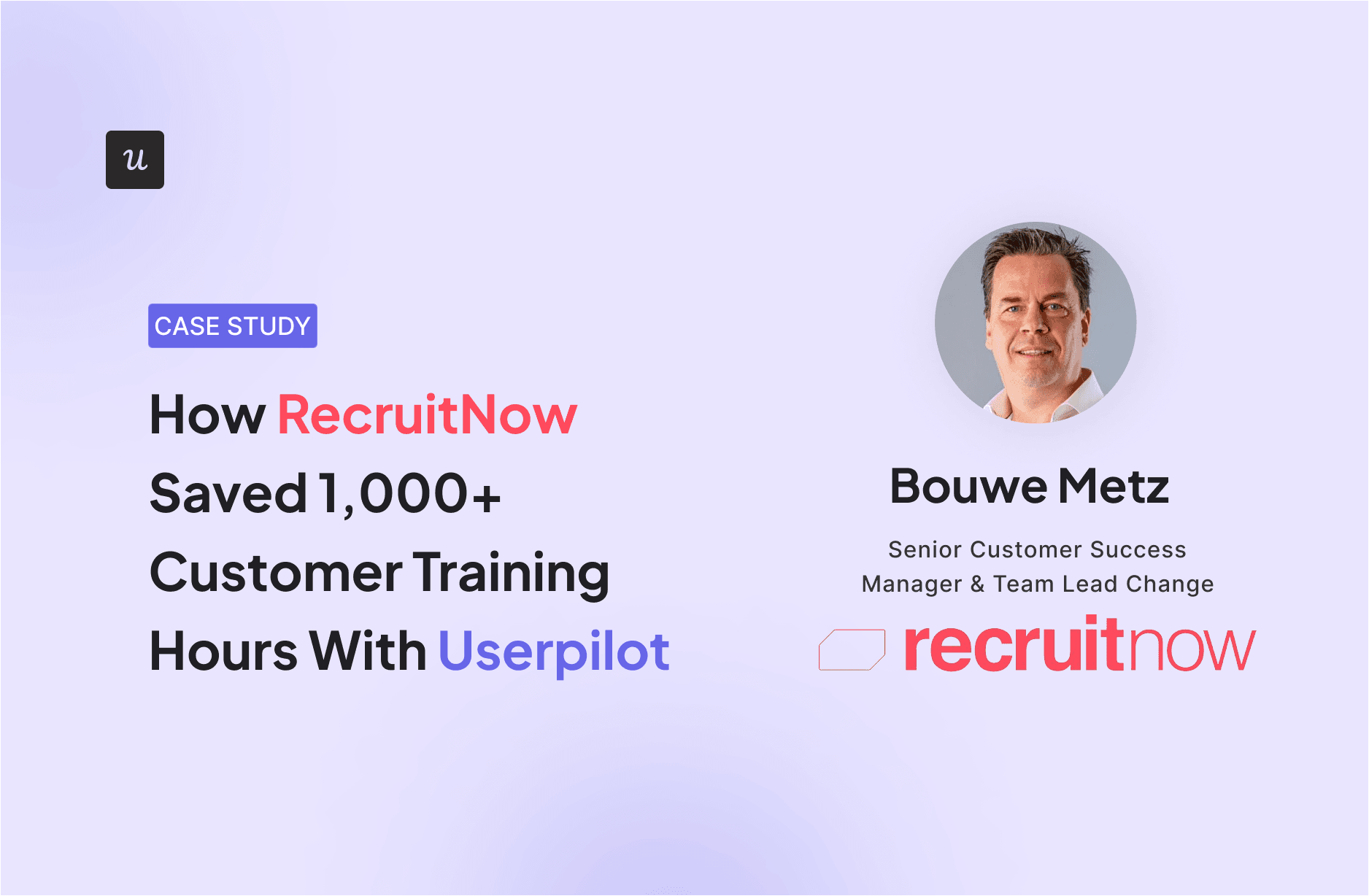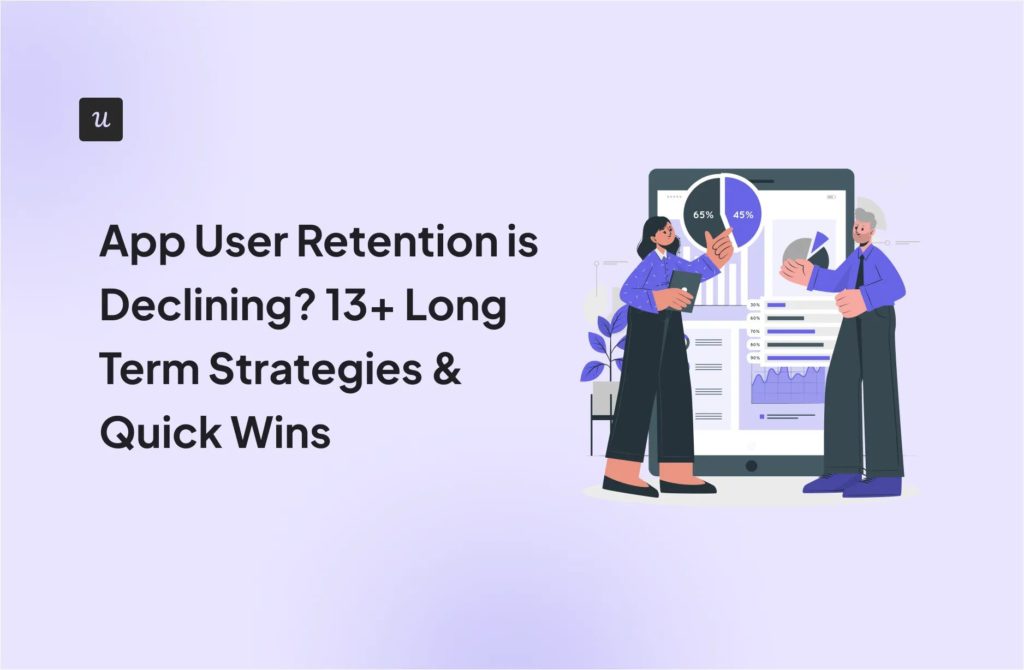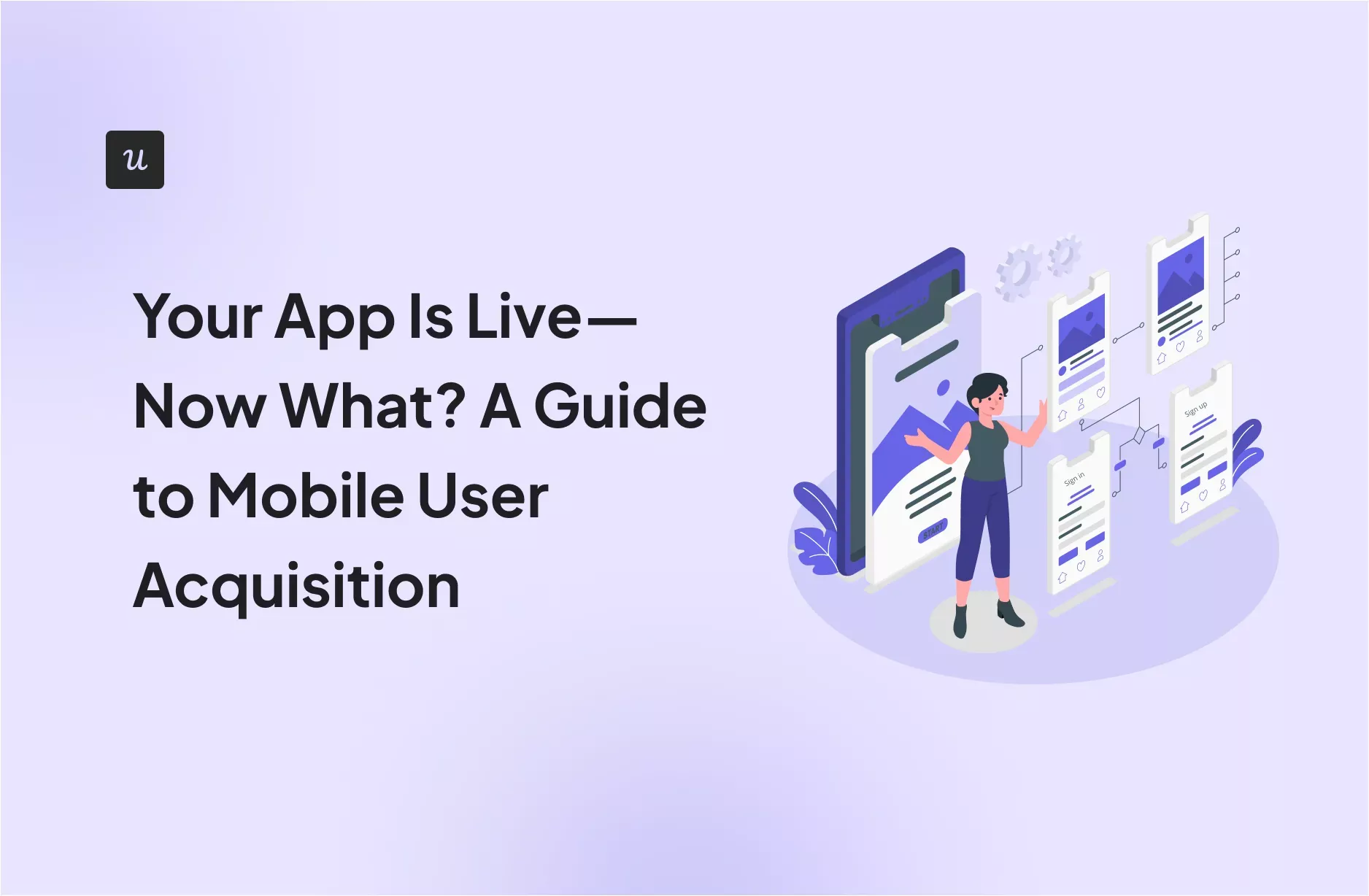
Product-Led Growth vs. Sales-Led Growth: What’s the Right Strategy For You?
One of the lessons you’ll learn quickly as a product manager is that there’s no universal approach to product growth, but there is a wrong one.
Unfortunately, getting your strategy wrong is costly: you lose valuable resources, engage in ineffective marketing campaigns and sales efforts, and experience stagnated or declining product growth.
To help you prevent that outcome, this article compares the underlying philosophy and features of the two main GTM strategies—product-led growth vs. sales-led growth.
Get The Insights!
The fastest way to learn about Product Growth, Management & Trends.
The product-led growth approach: Empowering the user
The product-led growth (PLG) approach focuses on the product as the primary driver of customer acquisition, engagement, and retention.
In real life, this means providing opportunities for the user to try out the product early on and depending on the product to qualify leads (known as product-qualified leads) by leading them to the ‘Aha!’ moment.
Companies using this strategy emphasize that a valuable, intuitive, and user-centric product will attract customers and encourage them to stay and spread positive word of mouth.
3 Key characteristics of a product-led strategy
The PLG model is an all-encompassing approach that imprints itself on various aspects of the business. Its notable features include:
1. Freemium/free trials:
PLG companies use free trials and freemium models to make their products easily accessible. Free trials give users access to the full product for a limited time, while freemium plans offer limited functionality for an unlimited time at no cost.
2. Self-service onboarding:
Product-led companies leverage self-service onboarding and interactive user guides to enable users to explore, evaluate, and adopt their products without the intervention of a sales team. The goal is to minimize the TTV so users immediately start using the product, adopt it, and happily spread the word.
3. Product-led content:
Product-led content marketing promotes a product by showing users how to use it to solve their problems. PLG companies use this strategy (blog posts, webinars, case studies, tutorial videos, etc.) to drive organic growth and foster loyalty.
The sales-led growth strategy approach: Building relationships
The sales-led growth (SLG) strategy is a more traditional approach to growth marketing. It relies on a dedicated sales team to identify, qualify, and convert leads.
Sales-led companies believe that personalized outreach, relationship building, and tailored offers can lead to higher conversion rates and a higher customer LTV.
3 Key characteristics of a sales-led approach
The sales-led approach is what you’d expect to see in successful businesses before the rise of modern-day SaaS companies. Its identifying traits include:
1. Dedicated sales teams:
The sales-led model emphasizes the pursuit of direct sales through a sales team. As a result, sales reps actively seek out and qualify potential customers, reach out to them, and build relationships with key decision-makers to close a deal.
2. Personalized demos and consultations:
Sales reps use a combination of sales calls, product demos, and even in-person meetings to understand each customer’s need and showcase the product’s solutions.
3. Relationship management:
In addition to conveying the product’s value, sales reps address customer concerns and build trust and rapport with them. This positions them to secure more favorable deals and close sales effectively.
Product-led growth vs. sales-led growth: So, what’s the difference?
The difference between PLG and SLG comes down to the following: SLG depends on the sales team to drive revenue growth while PLG relies on the product to attract and retain users.
These differences appear in 5 key areas:

- Discover vs. Demo: PLG users discover the product value through self-service and personal exploration while SLG users explore the product through personalized presentations by the sales team.
- Free Trial vs. Sales Convo: PLG builds interest by enabling users to experience the product directly through free trials while SLG leverages sales conversations to understand customer needs and nurture relationships.
- Knowledge Base vs. Contract: PLG users rely on self-education through a knowledge base while SLG users receive an outline of the product’s terms and conditions via a formal contract.
- Community vs. Configuration: PLG focuses on building a strong user community for peer-to-peer learning and support while SLG emphasizes configuring products to meet specific customer requirements.
- Persuade Purchase vs. Training: PLG persuades users to purchase through in-product experiences and compelling value props while SLG provides comprehensive training and ongoing support to guarantee successful product adoption.
Examples of successful product-led companies
You don’t have to look too far to find successful SaaS companies with a product-led structure. Some notable examples include:
1. Airtable’s formula for organic growth
Airtable’s PLG formula boils down to two words: “build” and “share.” They offer a vast library of templates with use cases ranging from content calendars to project management, applicant tracking, etc.
Once users are inside specific templates, Airtable nudges them towards becoming PQLs by encouraging them to fill out the template (build), sync it with a database, and invite colleagues to collaborate (share).

This ability to collaborate with other users on a worksheet plus the ease of sharing your self-designed template with others or embedding it on third-party platforms, gave Airtable the virality it needed to succeed.
2. Zapier’s feedback-driven product roadmap
Zapier has all the hallmarks of a PLG product—a free plan, an intuitive interface, and comprehensive self-serve support.
However, it fully centers the user by prioritizing customer feedback and incorporating user input into its product roadmap. They actively solicit this feedback through in-app surveys and respond to any feedback provided.

They also monitor and engage with users on community forums and social media to collect feedback which they then use to improve their product and address user needs.
As a result, Zapier has built a loyal following of users who stick with their product despite competition.
3. DigitalOcean solves pain points with free resources
DigitalOcean effectively leverages free resources as a key component of its PLG model to address several pain points experienced by developers.
For example, the DigitalOcean Development Center provides a curated collection of resources to help developers learn, upskill, and scale. It offers education across DigitalOcean’s product offerings like Droplets, Databases, Kubernetes, and others.

These free resources build trust and attract users to its platform. It also fosters a sense of loyalty among users who can easily find answers to their queries as their needs continue to grow.
Examples of successful sales-led companies
As with the PLG model, there are several examples of companies that successfully implemented the sales-led model.
1. Salesforce guides customers through complexity
Salesforce is a leading CRM provider despite having a huge and complicated set of products. This success is thanks to an effective sales team that works closely with businesses to understand their needs and create custom solutions for them.
For example, Salesforce offers tailored demos that showcase how their platform can address specific business challenges, such as improving lead generation or streamlining customer service.

2. ServiceNow adapts to diverse needs

To achieve its enterprise sales goals, ServiceNow deploys a robust sales team, an extensive partner ecosystem, and third-party referrals.
The in-house team is at the core of its customer acquisition process. They’re responsible for identifying and qualifying leads, conducting sales presentations and demos, building long-term relationships, providing customized solutions, and closing deals.
Beyond that, however, channel partners offer specialized knowledge and implementation services to customers in specific regions or industries., greatly expanding ServiceNow’s market reach.
3. Oracle drives business growth through human-driven engagement
Oracle’s SLG strategy relies on human-driven engagement across various touchpoints.
For example, they provide every potential customer with a knowledgeable sales representative and dedicated Customer Success Managers for customers.

They also deploy expert sales consultants to build relationships with business executives, understand their strategic needs and priorities, and emphasize the long-term value and ROI that Oracle’s solutions can deliver.
Making the decision: Product-led growth vs. sales-led growth
So, which of these strategies will guarantee maximum revenue growth for your business? Consider 4 questions that can help you answer correctly.
4 qualifying questions to ask before choosing your growth strategy
- What’s your product complexity? PLG is ideal if your product is easy to use and intuitive, while SLG is better for complex products that require significant explanation and guidance.
- Who’s your target audience? SLG is great if your ideal customer profile includes large enterprise clients, while PLG is better suited for smaller business clients.
- What’s your pricing model? PLG relies more on freemium models and tiered pricing. Meanwhile, the value-based pricing model emphasizing a large ROI is more suitable for SLG.
- What are the available resources and budget? SLG requires a large sales team, expensive marketing campaigns, and a robust customer success program. If your resources are limited, PLG might be a more cost-effective option.
Decision matrix for your growth goals
Your answers to the following questions should help you identify what’s better suited to your business. Consider each question and select the model housing the majority of your responses.
The hybrid approach: The best of both worlds
So far, we’ve treated the factors impacting your choice of product-led growth vs. sales-led growth as if they were binary. But that’s not always the case.
Thankfully, you don’t have to make a binary choice between PLG and SLG either. Instead, you can combine elements of both to create a more flexible and effective GTM strategy. This is known as the hybrid approach.
This approach typically retains the product as the central driving force of user engagement and initial value discovery. However, it also includes a sales team focused on identifying high-value accounts, guiding complex implementations, and closing large enterprise deals.
You adopt the strengths of both worlds and mitigate their respective weaknesses.
Why combine product-led growth and sales-led growth?
Combining elements of both PLG and SLG offers several key advantages, including:
- Adaptability to different customer segments: Meet the needs of early adopters and SMBs with free trials and intuitive onboarding while catering to large enterprises that need account managers and product demos.
- Wider customer reach: You can appeal to a wider range of customers by combining self-serve options with personalized support, or freemium offerings with strategic traditional sales.
- Balanced growth: A hybrid approach can balance PLG’s rapid customer acquisition with SLG’s larger average deal size, leading to more sustainable growth.
How Userpilot champions a hybrid product-led sales strategy
At Userpilot, the product is the primary driver of our growth strategy. But we also know the importance of staying flexible and responsive to the market. This is evident from the moment you reach the Userpilot landing page and throughout the customer journey.
For example, Userpilot’s pricing model features limited-time free trials to enable users to take the product for a spin.
There’s also a focus on intuitiveness and customer experience within the product. This is achieved through self-serve onboarding, extensive customer education resources, and user feedback collection.

Despite emphasizing the product in our go-to-market strategy, though, you’ll quickly notice elements of a sales-led approach in our strategy.
For example, we offer custom services for enterprise clients with varied needs and high-value orders. One of our sales reps will personally demo the product to potential Growth and Enterprise customers.
Similarly, following the product demo, enterprise clients receive a custom order based on their needs.

CASE STUDY: How RecruitNow Saved 1,000+ Customer Training Hours with Userpilot
Userpilot can also help you infuse elements of PLG principles into your strategy. This was the case with the Dutch Applicant Tracking System, RecruitNow.
RecruitNow originally depended on face-to-face training for new users. However, as they expanded into Germany and Austria, they found this process inefficient and unsustainable.
To tackle this challenge, they implemented Userpilot’s onboarding flows with video tutorials and walkthroughs. After completing the flow, users receive a credential for extra motivation.

Following the training, RecruitNow asks users to complete a feedback survey to help them assess the onboarding performance. Similarly, they launch a customer satisfaction survey every 6 months to learn how they can improve the product.

As a result, they’ve been able to scale down their face-to-face training. They now offer 2-hour training events every 2 weeks (ONLY 4 hours a month!) to answer users’ follow-up questions.
Read more about this case study here:
PLG vs. SLG: The verdict
One thing’s for sure, there’s no all-conquering GTM strategy that guarantees success to every (and any!) business. Companies like Slack may have popularized the PLG model but SLG companies like Salesforce continue to thrive too.
So, PLG isn’t here to replace the sales-led or marketing-led strategies. Each strategy has its benefits and challenges, so you’ll have to decide what works best for your product and audience—or combine them as Userpilot did.
Want to build product experiences code-free? Book a demo call with our team and get started!
FAQ
What's the main difference between product-led growth vs. sales-led growth?
Product-led growth strategy relies on the product to attract potential customers, inform them about the product, and convert them into paying customers.
Conversely, sales-led growth relies on a dedicated sales team to identify, qualify, and convert leads. Sales representatives nurture relationships with customers, iron out concerns, and negotiate favorable deals.
What are the pros and cons of a product-led strategy?
Pros:
- Scalability and lower customer acquisition costs: Eliminating the costs of setting up and managing a sales team lowers customer acquisition costs. It also makes it easier to scale efficiently.
- Faster growth potential: PLG products often encourage viral sharing or the creation of user-generated content, accelerating the sales cycle and driving rapid adoption.
- Increased customer satisfaction: Empowering users and providing a positive product experience can lead to higher satisfaction and retention.
Cons:
- Over-reliance on product-market fit: PLG relies heavily on organic growth and virality, so your product may struggle if it’s complex, very niche, or requires significant explanation.
- Competition in the freemium space: The freemium model greatly reduces the barrier to entry for startups, which encourages fierce competition as your product succeeds.
- Monetization challenges: The freemium model attracts several low-paying customers who may be difficult to convert into paying customers.
What are the pros and cons of a sales-led strategy?
Pros:
- Effective for complex or high-priced products: SLG is often the preferred approach for products that require detailed explanations, customized implementations, or significant evaluation and negotiation.
- Stronger customer relationships and higher CLTV: Personalized interactions and ongoing support can foster customer loyalty, larger contract sizes, and increased lifetime value.
- Valuable customer feedback: Direct customer interactions can provide valuable insights for product development and improvement.
Cons:
- Longer sales cycles: Personalized sales often require more time and effort to build relationships, conduct demos, and negotiate deals.
- Potential for friction: An overly aggressive sales rep can create friction with potential customers and damage sales.
- Higher customer acquisition costs: Building and maintaining a sales team is expensive. Between the cost of hiring each sales rep (salaries, commissions, benefits, training, tools, etc.) and the expensive nature of traditional marketing.









